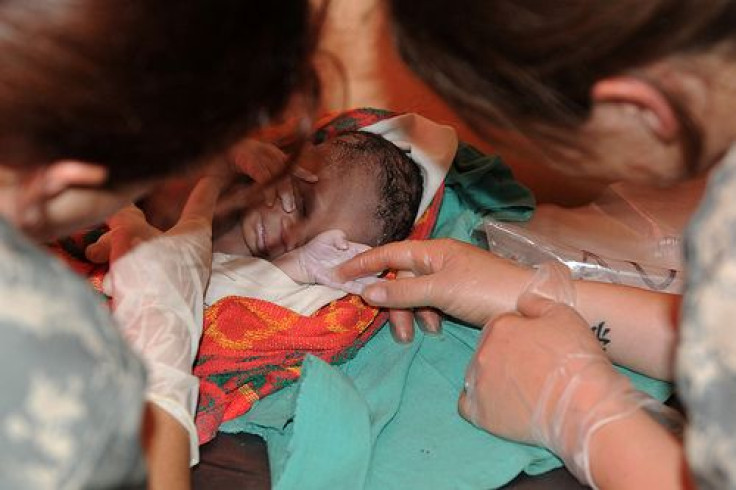HIV Rates In Children Down 50% In 7 African Countries, UNAIDS And PEPFAR Move Toward Global Plan Of Total Eradication In Newborns By 2015

The ongoing global pandemic of HIV has begun decelerating in seven sub-Saharan countries in Africa, a press release from Joint United Nations Program on HIV/AIDS (UNAIDS) reports.
These successes move the countries ever closer to realizing their Global Plan targets. Created in 2011 by UNAIDS and PEPFAR (President's Emergency Plan for AIDS Relief), the plan aims to reduce HIV rates in newly infected children by 90 percent and reduce AIDS-related maternal deaths by 50 percent, by the year 2015.
The seven countries seeing decreases include Botswana, Ethiopia, Ghana, Malawi, Namibia, South Africa, and Zambia — with two others, United Republic of Tanzania and Zimbabwe, making substantial progress since 2009. Ghana showed the most improvement, reducing its overall infection rate by 76 percent. South Africa reduced its infection rate by 68 percent.
Overall, the 22 countries included in the Global Plan collectively reduced their infection rate by 38 percent, or 130,000 fewer people infected with HIV since 2009. Ninety percent of new HIV infections in children is found in these 22 countries.
The formal name for the Global Plan is the Global Plan Towards The Elimination Of New HIV Infections Among Children By 2015 And Keeping Their Mothers Alive. It began in July 2011 at the United Nations General Assembly High Level Meeting on AIDS.
Not all of the data is optimistic, however; some countries saw an increase in their infection rates. Angola saw a rise, as did Nigeria, which currently has the largest number of children acquiring HIV. In 2012, the country experienced 60,000 new cases of infection.
"The progress in the majority of countries is a strong signal that with focused efforts every child can be born free from HIV," said Michel Sidibé, Executive Director of UNAIDS. "But in some countries with high numbers of new infections progress has stalled. We need to find out why and remove the bottlenecks which are preventing scale-up."
Sources say Nigeria's setbacks may prevent the other countries from reaching the Global Plan's targets.
"We have the tools required to reach the Global Plan's goals, and recent data show that we are moving ever closer to their realization," said Ambassador Eric P. Goosby, U.S. Global AIDS Coordinator. "This month, as U.S. Secretary of State John Kerry announced, the one millionth baby will be born HIV-free due to PEPFAR's support."
"Now, we must all continue working together to see the day when no children are born with HIV, which is within our reach," he continued.
The UNAIDS press release noted that many pregnant women in highly infected countries were receiving antiretroviral medicines in 2012 who weren't receiving them in 2009. Seventy-five percent of women in many countries have received the medicine so far. In countries such as South Africa and Botswana, the transmission rates from mother to child hover as low as five percent.
The UNAIDS report provides sobering statistics about children's access to these treatments, however.
Out of the Global Plan's 22 priority countries, the 220,000 new infections in 2012 came from 21 of those countries. Half of the women or infants did not receive antiretroviral medicine during breastfeeding to prevent the transmission from mother to child, and 40 percent of pregnant women did not receive the medicine at all.
Organizational leaders remain hopeful despite these instances of slow growth, finding hope in the breakthroughs of medical science around the world.
"This year's news of a single baby in Mississippi being functionally cured of HIV gives us hope that, one day, science may offer a cure for everyone, everywhere," Sidibé and Goosby write in the progress report. "Meanwhile, we must do all we can and use the tools and political commitment available to ensure that every child and every woman is protected from HIV and that everyone eligible for HIV treatment has access to it."
The 22 countries involved with the Global Plan are: Angola, Botswana, Burundi, Cameroon, Chad, Côte d'Ivoire, Democratic Republic of the Congo, Ethiopia, Ghana, India, Kenya, Lesotho, Malawi, Mozambique, Namibia, Nigeria, South Africa, Uganda, United Republic of Tanzania, Swaziland, Zambia and Zimbabwe.



























